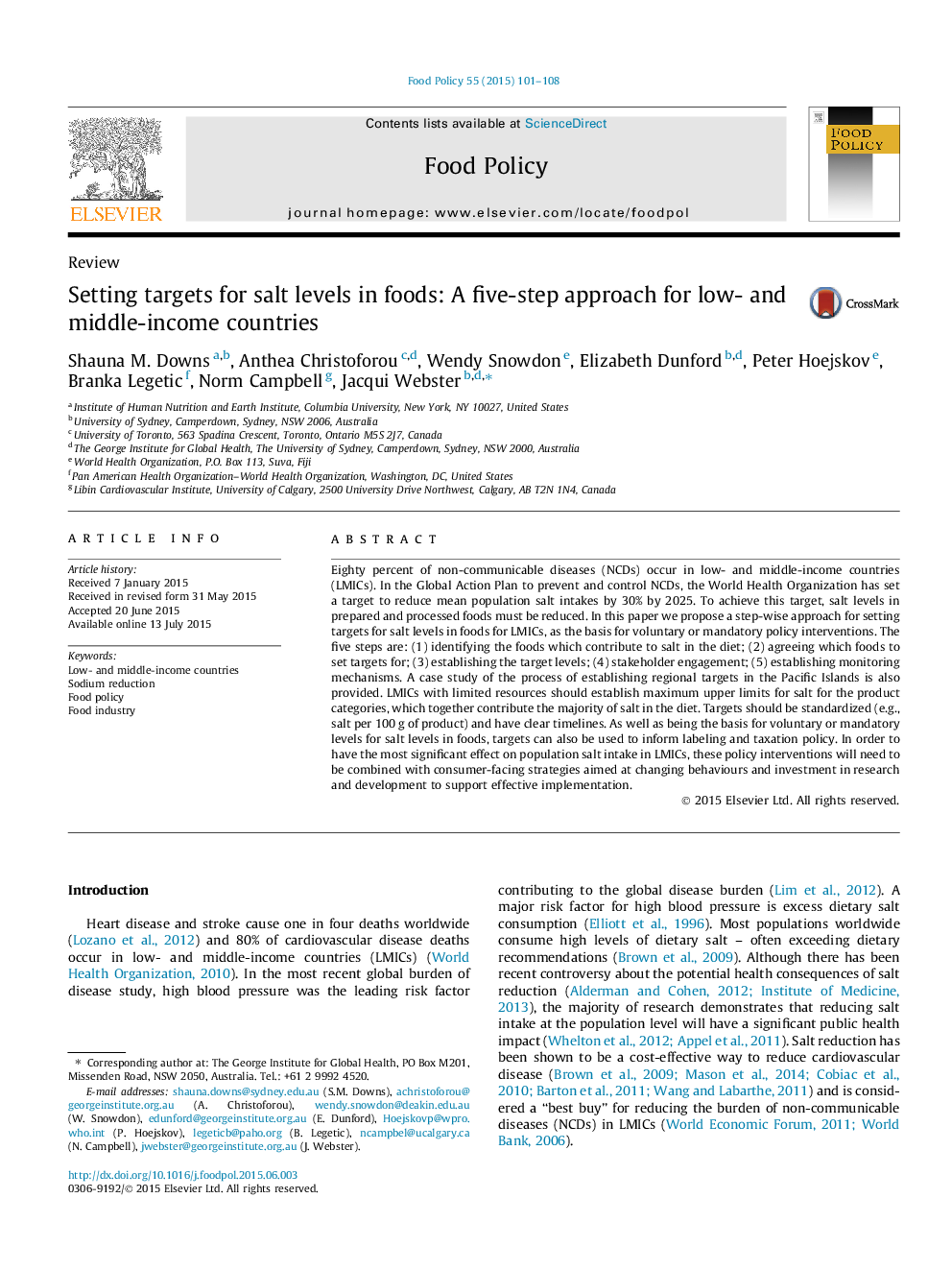| کد مقاله | کد نشریه | سال انتشار | مقاله انگلیسی | نسخه تمام متن |
|---|---|---|---|---|
| 5070333 | 1477021 | 2015 | 8 صفحه PDF | دانلود رایگان |
- Mean population salt intake can be reduced by decreasing salt levels in foods.
- Salt level targets for different foods can drive food industry reformulation.
- A five step approach to setting targets for salt levels in foods is proposed.
- Experience of setting regional targets for the Pacific Islands is outlined.
- Effective action to reduce salt intake will save millions of lives globally.
Eighty percent of non-communicable diseases (NCDs) occur in low- and middle-income countries (LMICs). In the Global Action Plan to prevent and control NCDs, the World Health Organization has set a target to reduce mean population salt intakes by 30% by 2025. To achieve this target, salt levels in prepared and processed foods must be reduced. In this paper we propose a step-wise approach for setting targets for salt levels in foods for LMICs, as the basis for voluntary or mandatory policy interventions. The five steps are: (1) identifying the foods which contribute to salt in the diet; (2) agreeing which foods to set targets for; (3) establishing the target levels; (4) stakeholder engagement; (5) establishing monitoring mechanisms. A case study of the process of establishing regional targets in the Pacific Islands is also provided. LMICs with limited resources should establish maximum upper limits for salt for the product categories, which together contribute the majority of salt in the diet. Targets should be standardized (e.g., salt per 100Â g of product) and have clear timelines. As well as being the basis for voluntary or mandatory levels for salt levels in foods, targets can also be used to inform labeling and taxation policy. In order to have the most significant effect on population salt intake in LMICs, these policy interventions will need to be combined with consumer-facing strategies aimed at changing behaviours and investment in research and development to support effective implementation.
Journal: Food Policy - Volume 55, August 2015, Pages 101-108
